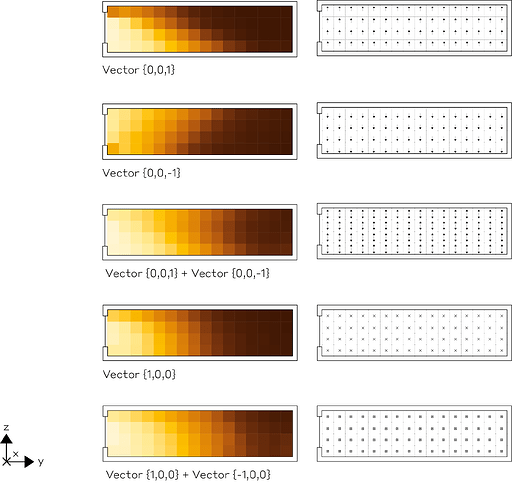Hi LBT team and forum!
I have been thinking about the best way to study daylight in section, more specifically how to setup the grid and vectors to get the most accurate results in lux (regardless of end metric).
When you analyse daylight in plan, the vectors are (normally) {0,0,1}, which I guess is since it is adapted to a working plane. As desks, or books, or most working scenarios has an opaque “backside”, it makes sense to only account for the daylight for one up-facing vector.
However, there might be other scenarios where one would want to determine the luxes in section and include the full “range” of daylight perception. I made some tests (see attached image) and I derive that with {0,0,1} you get, (depending on how many bounces you include in the simulation) the 1st and 3rd “bounce”, whilst {0,0,-1} would yield the luxes for the 2nd bounce. Does it not make sense to account for both of these results together if the point you are studying is “free” in the air?
Another alternative is to direct the vectors normal to the studied plane, in the X-direction {1,0,0} in the attached image, which is similar to {0,0,1} but has a softer gradient. Also here, though, would it also not make sense to include the luxes also in the opposite direction, {-1,0,0}, in the results?
Is there a convention around how to model daylight in section, or if not, what would you recommend?
